J. Paul Peszko looks into the growing challenges facing visual effects houses when creating vfx for television.
With a wealth of new shows joining the returning hits from last year, the new fall television season is off to a strong start. And just as strong is the roll that visual effects are playing in these shows. Seeing the plethora of effects-oriented feature films and video games increasing exponentially, network executives refused to be left out in the cold when it came to the popularity that visual effects shows could bring to their lineups. Interestingly, not only are there more and more effects shows being aired, but visual effects firms are even supplying effects for traditional non-effects shows. Television producers in general now realize how visual effects can increase the production value as well as cost savings of practically any show.
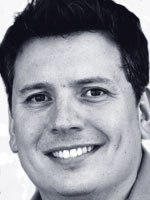
So, this month we are taking a look at visual effects in television. We are going to start with a brief survey of visual effects studios to discover which companies are working on which shows. We will follow this up with a look at some of the challenges faced in creating visual effects for television.
When it comes to television as well as features, Zoic Studios is one of the most prolific effects houses anywhere. I spoke with Andrew Orloff, vfx supervisor at Zoic, and here is their list of current shows:
Chuck: "It's a big spy show, so it's a pretty big special effects show. There's a good amount of sign replacement, background replacement, special effects enhancement and CG gadgets."
Cold Case: "It's mostly transitions and visual effects production fixes and visual effects enhancement."
Criminal Minds: "Basically the same vfx functions as Cold Case."
Gossip Girl: "They do a lot of typing on PDAs and (cell) phones, so there are a lot of phone burn-ins."
Heartland: "(There's) a lot of greenscreen work and driving greenscreens."
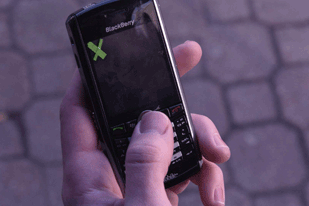
Journeyman: "We do the time travel transitions. We do a lot of adaptation style split screens for the same character shot at the same time. We did re-enactment of the 1989 Santa Cruz earthquake. Also set extensions, sign replacements and basically redressing San Francisco for different time frames from the 1980s to the 1990s."
Las Vegas: "We have done a lot of explosions, explosion enhancement, visual explosions."
Men in Trees: "We're doing greenscreen work for them."
Pushing Daisies: "We did some explosion enhancement and special effects enhancement."
Sarah Connor Chronicles: "We have a digital 'Terminator,' tons of explosion enhancement, tons of energy and blasts from different kinds of guns, squib hits, squib enhancements, digital explosions, digital destruction, matte paintings, set extensions."
Shark: "We did some greenscreen work."
True Blood, an HBO series: "It's a vampire show so we've done fang replacements, fang extensions and general body contortions for the vampires."
Bionic Woman: "We're doing the bionic running effects. We're doing a lot of body removal. We're doing a bionic eye, a bionic ear, a bionic leg and a bionic arm."
Kalifornication, a Showtime series: "We're doing nude pictures basically. We're doing nipple replacement, and we're also doing a lot of driving and also some greenscreen." There's a dream sequence loaded with greenscreen work."
CSI: Crime Scene Investigations: "We're doing all the CSI into-body shots, the ballistics, and all the macro replacement shots. We're doing Vegas replacement and a lot of green screen work. We're doing physical effects enhancement, and high-speed photography."
CSI: Miami: "We're doing CSI shots, which are the macro photography shots."
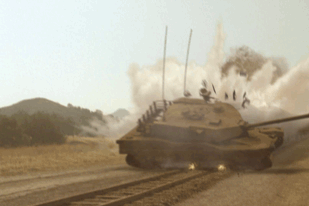
Eureka for the SCI FI channel: "All kinds of sci-fi visual effects. We're doing machinery, robots, ray guns, and force fields. We're doing vehicles, prosthetic limbs. It's really an invention-of-the-week type show. We're doing holograms, particle work, the whole thing."
Jericho: Orloff couldn't go into details on the show at this time but said it was basically CG vehicles and matte paintings.
October Road: "We're doing matte painting and CG set work."
Prison Break: "We're doing virtual effects, CG buildings and CG environments."
About their television work in general, Orloff says, "Things have change quite a lot, and we have a lot more shows than we used to. We do more seamless effects, a lot more virtual effects, set extensions and matte paintings. Location replacement is something that is really big for us. We're working on gathering panoramic plates, gathering information for all of our locations, so that we can rebuild the set and add stuff to it. That's really important for us."
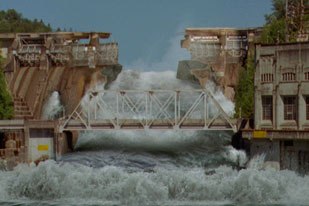
Another extremely active effects house is Entity FX. They have two studios, one in Santa Monica, the other in Vancouver. Like Zoic, they do effects for features as well as television. I spoke with Mat Beck, president of Entity FX, and he gave me the rundown on their current TV work.
Smallville: "We pretty much do everything for them that has to do with visual effects. It's a pretty efficient show. We've been doing it since the second season. (This is their sixth season doing visual effects for the show.) We do the effects in both L. A. and in our Vancouver facilities. That entails a fair amount of 3D, and there's a lot of CG in the show."
Fight Science and Sport Science: "The shows are based on the mechanics and science of how great athletes and great martial artists perform. So, there's a tremendous amount of performance capture, motion capture of athletes doing amazing stuff. Then we also see complete CG figures in motion capture demonstrating the techniques for encounters from either these amazing fighters or these amazing athletes. In the case of Fight Science, you'll see exactly how the energy travels through the body, how somebody's joints get tweaked to the point where you have to tap out. And on Sport Science, there's basically analyzing the moves and techniques and capabilities of great athletes like Jerry Rice and Ben Roethlisberger."

Crime 360: "It's based on real crimes and using high-tech devices and techniques to help the police solve them. It's kind of like a police procedural. The difference is that it's based on a real crime. We follow the real detective around and demonstrate the process of narrowing down the possibilities to try and catch the real suspects. We provide them with a special device that documents the crime scene in three dimensions. It does a three-dimensional scan of the crime scene so that once the crime scene is cleaned up, they have all the information and can revisit it as we revisit it and say, 'Wait a second. What's that under the table there.' It's a great narrative tool to show exactly what was there and to illustrate the thought process of catching the bad guys."
Pushing Daisies: As of this writing, Entity FX has just begun doing visual effects for the show, which include a combination of CG effects, set extensions, CG architecture, CG creatures, split screens and wire removals. According to Beck, they are doing about 58 shots per week.
One of the most interesting shows on the SCI FI Channel has been Stargate Atlantis. The company responsible for the visual effects is Rainmaker. Justin Gladden, visual effects producer for Rainmaker, listed their current slate of television effects work:
Stargate Atlantis: "It's is a very heavy vfx show but they rely on us to develop realistic effects to suspend the disbelief that this is an imaginary world and allow the viewer to be taken on a journey. "We do approximately a third of all of the visual effects shots for each episode."
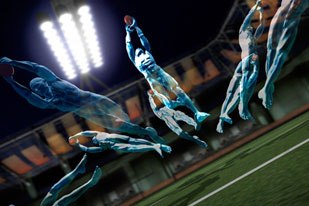
The L Word: "The L Word has requested everything from correcting a spelling mistake in a credit roll to creating a smooth camera move transition between two scenes."
Whistler: "We had to add snow to shots where the weather wasn't cooperating on the day and continuity became an issue."
According to Gladden, "Non-visual effects shows like The L Word or Whistler rely on us for anywhere from a single shot to a variety of effects that are difficult or impossible to film practically. Most frequently episodic shows are looking to us as a cost effective way of creating shots that either couldn't be filmed practically due to the limitations of the set, the location or the camera or for visual effects solutions to situations in which invisible effects are required. Our goal for non-vfx shows is always seamless effects that enhance the story point but don't draw the audience's eye to the effects themselves. We don't make TV shows -- we make TV shows better."

Rainmaker is also creating effects for two other Canadian shows jPod and Search and Rescue, a brand new Canadian drama about a Coast Guard crew.
Gladden says, "Our most common effects are greenscreens, wire removals, monitor burn ins, playback graphics, matte paintings, architectural builds and enhancements to everything from weather to explosion dynamics."
Scott Milne, the owner and visual effects supervisor at MFX, where they use Flame as the main tool of their pipeline and Maya, listed the following shows among their credits:'
Dexter, Grey's Anatomy, Friday Night Lights, My Name is Earl, Two and a Half Men and Samantha Who? to name a few.
"These shows are not considered typical effects shows," says Milne, "but they frequently have ambitious storylines that demand visual effects ranging in difficulty. The thing all these shows also have in common is high expectations for quality, tight schedules and TV budgets."
Milne has noticed that there has been a progression from simply "sweetening" the shots to vfx being part of the storyline or solving some story issues. "It's not just an afterthought anymore. It has been a gradual build from creating some illusions to being an expectation."
Milne then spoke about some of the challenges these shows presented. "Showtime's Dexter has posed several challenges this second season, namely the underwater graveyard sequence. The original shots were filmed underwater in Catalina with a flat, sandy bottom ocean floor with scattered custom markers for tracking in post. Our fx team then replaced the ocean floor with a deep ocean crevice filled with body bags utilizing Maya 3D elements, matte paintings and compositing in Flame."

The season finale of Friday Night Lights set at Dallas Stadium presented still another challenge for MFX. "Our challenge was to take 1,500 extras and replicate them to make it appear as though they were a crowd of over 30,000." Scott Milne supervised the visual effects plates over three days of shooting with seven 16mm cameras rolling at any given moment. "This hand held documentary style showed utilized over 76 shots that needed to be rotoscoped and composited in Flame in just nine days."
ABC's hit Grey's Anatomy "Super Bowl" episode had a storyline that called for a rather huge explosive effect, where a homemade rocket launcher misfired and left a man impaled with an explosive missile. "The minimal team of brave doctor's were left to extract it and have the bomb squad dispose of it safely in an evacuated section of the hospital," Milne explains. "Just when you think it's over, the missile explodes reducing our bomb squad leader into what's referred to as Pink Mist." Milne served as the visual effects supervisor and designed this sequence of 16 shots utilizing practical special effects, stunts and rig removal, 3D debris, flame and smoke along with weeks of Flame compositing.
Tim Jacobsen, director of vfx at Encore in Hollywood, where they normally use Flame and Inferno to create visual effects along with some 3ds Max and on occasion their proprietary Fire system, listed these shows in their lineup: House, Pushing Daisies (a lot of compositing), Ugly Betty, Journeyman, Dirty Sexy Money, Big Shots, Entourage, Nip/Tuck, My Name is Earl, The Closer, NCIS, Boston Legal, Monk, Cavemen, Mad Men, Big Love.
Jacobsen says, "House and Pushing Daisies are heavy in effects, 30-50 shots per week. Sometimes as high as 100 shots on a heavy episode. Pushing Daisies has lots of windows composites -- not complicated but the quantity is huge."

Like some of the other vfx executives that I contacted, Jacobsen states, "Most shows are not typically vfx, for example House. But the season finale (ended) with scene in the waters between Florida and Cuba: 3D water and rain, 3D helicopters." They also created a flight simulator with greenscreen as well as backgrounds and a 3D cockpit.
Ada Anderson, director of production episodic television at RIOT, says they are using Smoke for visual effects and finishing on the following: Prison Break, Cavemen, Big Love, Curb Your Enthusiasm and Cold Case (uses Smoke one to two days per week for flashback vfx work, part of storyline).
Television can oftentimes present just as great a challenge for a vfx studio as feature film. I asked Andrew Orloff at Zoic Studios if this were true of the shows that they are working on. "Definitely. One of the shows we did last year in terms of visual effects was Drive. That was a big show for us, where we got a chance to create a lot of stuff on green screen and really meld the world of practical, first unit photography with traditional visual effects, CG and compositing."
Another show that presented a huge challenge for Orloff and Zoic was Journeyman. "For Journeyman, where we were given the challenge of recreating the Santa Cruz-San Francisco earthquake, we needed a lot of destruction, a lot of broken glass elements, we needed a lot of things to happen that we couldn't turn around in a typical episodic time frame. So, we didn't have time or money to create a full-scale model to destroy a building. We didn't have enough time to do a fully CG building destruction. So, we split the difference and created scale models of the glass and some of the rubble that was coming off the building and shot that and created the rest with CG. We own our own insert stage. So, we were really able to combine the best of both worlds, shooting some miniature pieces that were composited into the larger CG animation. We did a similar workflow for the Jericho vehicles. I wish I could tell you more about that, but we're sworn to secrecy."
Some challenges are so great in fact that they require technical upgrades. "Prison Break was doing a virtual building, and that was really an upgrade to our rendering pipeline," Orloff explains, "because they basically had helicopter shots of nothing, literally a patch of ground with 15% of the buildings that you wanted to be there. So, we had to create digital buildings, digital ground, digital fence, digital trees, digital everything in these sweeping, rotating helicopter shots. To make that all track in and be photo-real was a real stretch of mental ray and Vray beta. So, something were looking at is changing our rendering pipelines to incorporate the Vray software. That's a big technical upgrade for us. We use it a lot on Eureka, too."
"Creating anything that mimics real life or organic environments is always a challenge," claims Rainmaker's Gladden. "In Stargate Atlantis, being based in a water environment creates unique challenges when the vehicles or city must interact with the water. Creating new worlds that have yet to be explored or sometimes even envisioned is not only exciting but does present unique challenges that are overcome through close collaboration with the show's visual effects production team.

One particularly challenging episode that Gladden pointed out was from Stargate Atlantis' season four opener. "Season four begins with a two-part opener -- "Adrift" and "Lifeline" -- in which the city of Atlantis and her crew are lost in space. Unable to return to their original planet due to threats from the Wraith, the Atlantis team finds a new planet to settle out of reach and beyond the watchful eyes of their nemesis, The Wraith. Sheppard is called upon to use his ancient gene to land the city safely on the surface of the water. This sequence was particularly difficult as the city must interact with the atmosphere as it breaks through from space, falling towards the ocean through layers of cloud finally crashing into the ocean as Atlantis lands on its new home planet. There are, of course, many challenges to a sequence like this, the first of which are attaining the impression of mass, weight and speed as the city falls to the earth. Out of the entire sequence, the city crashing into the ocean required the most creativity from all members of the team. Different people worked on the various elements that went into this shot with the ultimate goal of creating a realistic look out of something entirely imaginary. The 3D team used our model of the city, the shield and the ocean surface. Then they had to develop all of the support elements like water splashes, foam, a tidal wave and the motion as the waves travel away from the city. The comp artist then takes all of those raw CG elements and combines and massages them to take the various 3D elements from rough ideas to a photorealistic look."
Beck explained that the real challenge for Entity FX, when it comes to television work, is a creative workflow. "One of the things we do a lot of is set extensions and put people in environments in which they are not really there. We're doing a lot of pre-visualization and we're doing a lot of motion capture. One of the things that we're always trying to do is trying to give directors the tools to make it easier to interactively tell the story without spending a lot of time on the set. This is for all of our shows. But we've been working with Smallville for so long that we have kind of shorthand. One of the things we can do is have somebody sitting in Burbank and somebody sitting in (Vancouver) Canada and somebody else is in Santa Monica and we're all looking at the same thing and we all have the same shots available to us. It improves the creative flow, the creative interaction in terms of storytelling between the production company and us. Of course you need to have the infrastructure so that everything synchronizes together and so that we can have the fastest feedback possible between the creative partners."
Beck suggested that the line between what's production, what's pre-production and what's post-production is shifting a lot, to where a lot of the movie can get made in pre-production and then get revisited in post-production. "We work really hard to interface really well with the departments that are relevant like post-production and editorial so that we can test stuff back and forth really quickly. Then you do get shorthand where they get a good idea of what they can expect from us and use that to fix their problems and come up with new ideas. And we get a pretty good idea of what they're looking for so that the number of necessary iterations go down and we're able to zero in on the solution quickly."
This is what Beck calls the curse and blessing of TV. "You have to narrow in on the best solutions very quickly or you're not going to get done in time. That's the problem. The good part about it is that it sort of precludes you from wandering around in the wrong solution universe for six months. You just have to get it done quickly, and sometimes that invites a certain kind of sharpness and crispness to the process, which promotes very good creativity and product."
J. Paul Peszko is a freelance writer and screenwriter living in Los Angeles. He writes various features and reviews, as well as short fiction. He has a feature comedy in development and has just completed his second novel. When he isn't writing, he teaches communications courses.










